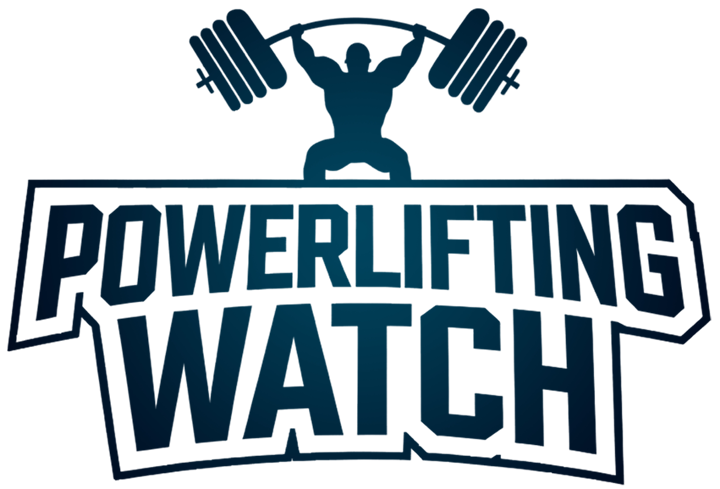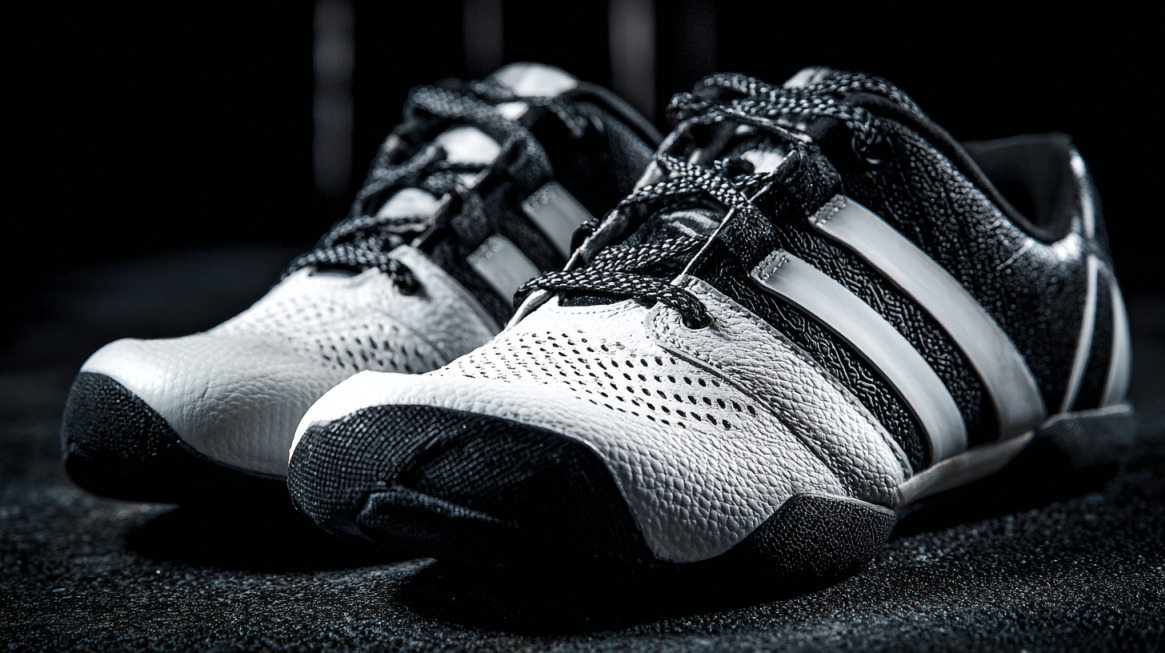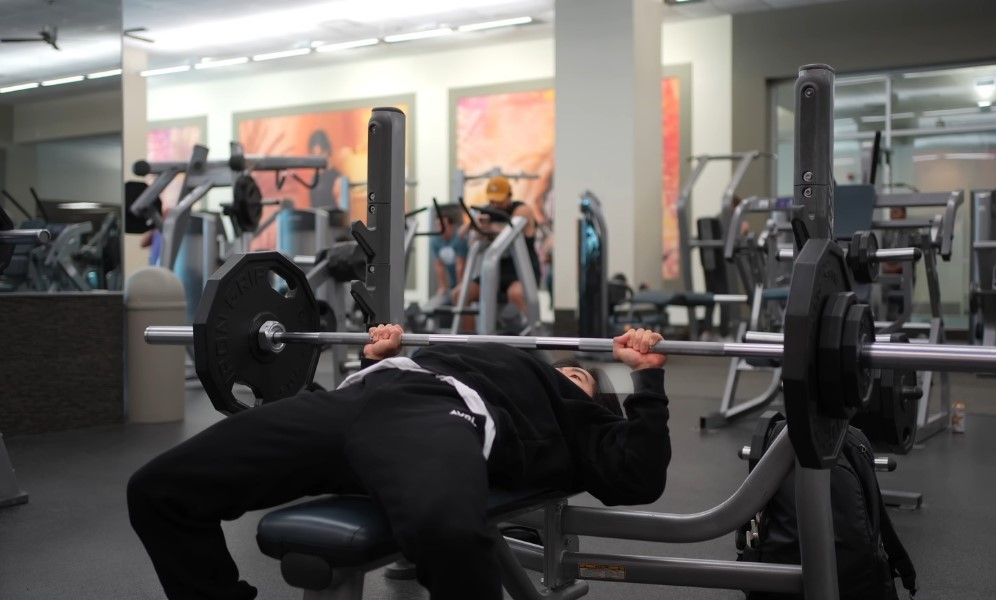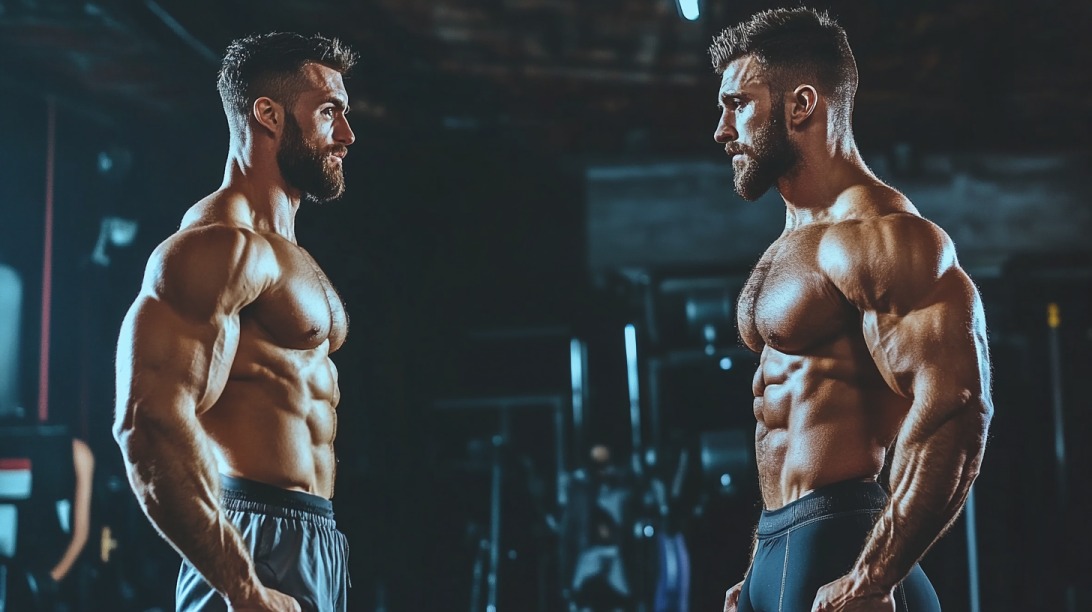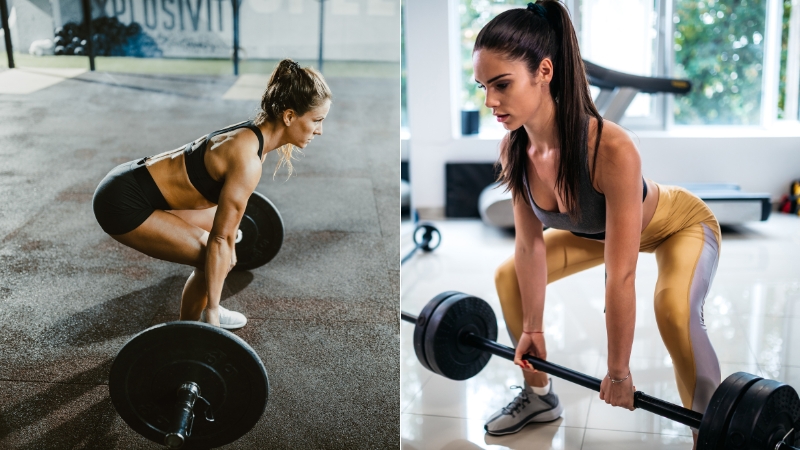Powerlifting requires more than just brute strength. Footwear plays a critical role in enhancing performance by optimizing biomechanics and safety across the three core lifts:
- Squat
- Bench press
- Deadlift
Heel height influences squat depth and torso angle, while outsole stiffness improves power transfer during heavy lifts.
A stable base helps with generating leg drive on the bench and maintaining balance during deadlifts. Proper powerlifting shoes are essential for anyone serious about progressing efficiently and avoiding injury.
Criteria such as stability, heel height, lockdown features, durability, and value were prioritized to ensure well-rounded picks for lifters at every level.
1. Nike Romaleos 4 – Best for Squats & Olympic Lifts
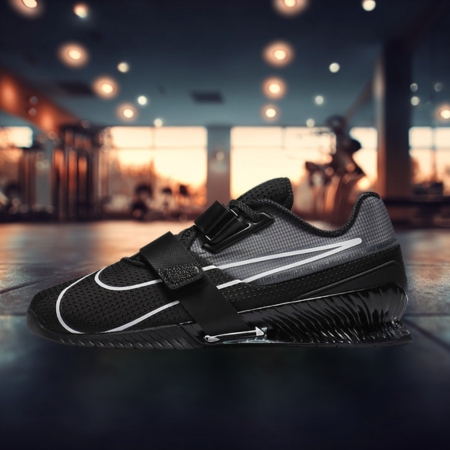
Engineered for lifters who demand maximum support and precision under load, Romaleos 4 delivers unmatched squatting performance.
- Heel Height: 20 mm
- Sole Material: TPU for zero compression
- Lockdown System: Dual midfoot straps with lace-up closure
- Use Case: High-bar squats, front squats, Olympic lifts
Stable, heavy, and made to keep your feet rooted to the platform. Ideal for serious lifters looking to maximize squat depth and upright posture.
2. Adidas Powerlift 5 – Best for Beginners
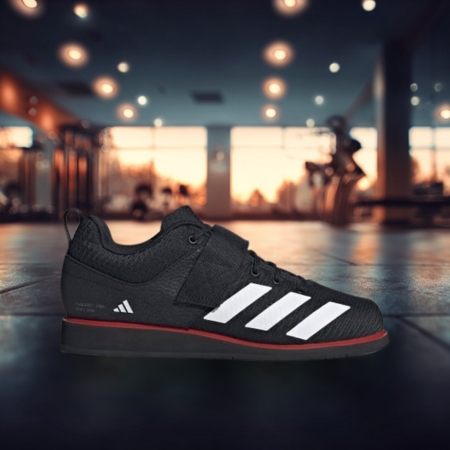
A trusted entry point into powerlifting shoes, Powerlift 5 balances performance and affordability for newcomers.
- Heel Height: 15 mm
- Sole Material: High-density EVA
- Lockdown System: Single midfoot strap
- Use Case: Learning squats, general strength training
Lightweight feel and forgiving fit make this shoe ideal for early technique development without sacrificing support.
3. Reebok Legacy Lifter III – Best for Advanced Lifters
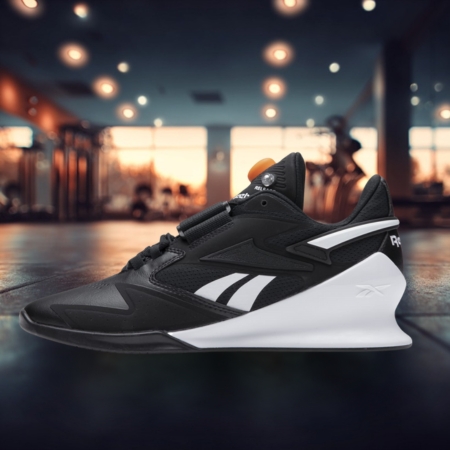
Designed to handle the heaviest loads, Legacy Lifter III is a powerhouse in stability and build quality.
- Heel Height: 22 mm
- Sole Material: TPU with extra width
- Lockdown System: Dual straps and lace combo
- Use Case: Heavy squats, low-bar mechanics, competitive lifting
Built like a tank with unmatched midfoot security, this shoe thrives under maximum effort lifts.
4. Adidas The Total – Best for Deadlifts
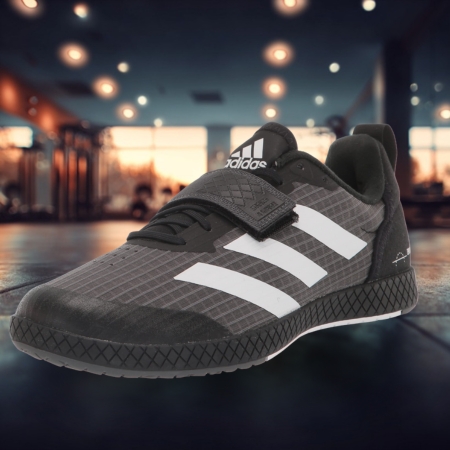
Purpose-built for deadlift dominance, The Total minimizes elevation and maximizes ground contact.
- Heel Height: 0 mm (flat)
- Sole Material: Rigid rubber outsole
- Lockdown System: Single strap and wide lacing
- Use Case: Deadlifts, sumo stance, low-stack pressing
Wide base and ultra-low profile help lifters maintain optimal leverage off the floor.
5. Nike Metcon 9 – Best Hybrid Option
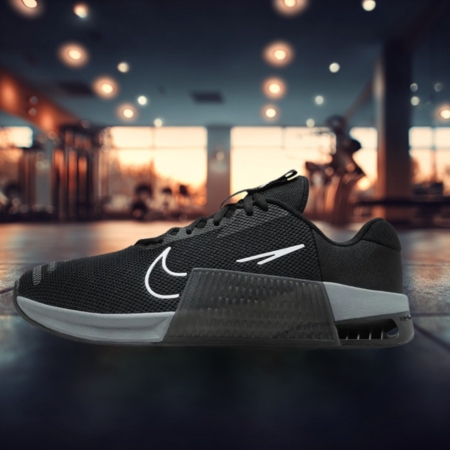
Perfect for lifters who need one shoe that can lift and handle occasional conditioning work.
- Heel Height: ~4 mm effective drop
- Sole Material: Stable heel, flexible forefoot
- Lockdown System: Traditional lacing
- Use Case: General lifting, CrossFit, hybrid programs
Nike Metcon 9’s balanced design offers versatility with enough stability for moderate squatting and deadlifting.
6. Converse Chuck Taylor All-Stars – Best Budget Deadlift Shoe
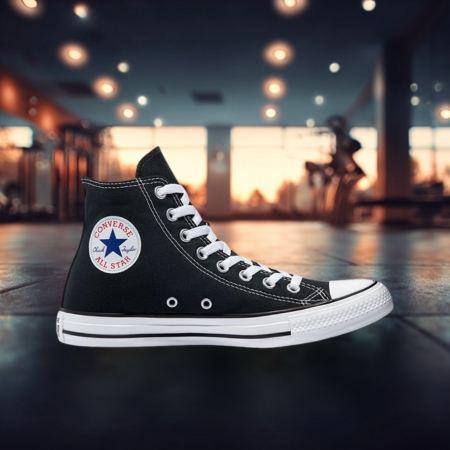
Converse Chuck Taylor All-Stars is a classic, minimal, and still favored by many seasoned deadlifters.
- Heel Height: 0 mm
- Sole Material: Thin rubber
- Lockdown System: Standard canvas lacing
- Use Case: Deadlifts, casual training, budget lifters
Flat profile and hard sole create reliable ground feedback during heavy pulls.
7. TYR L-1 Lifters – Best for Wide Feet

Anatomically shaped with wide-toe splay and serious squat-focused design.
- Heel Height: 21 mm
- Sole Material: Non-compressible TPU
- Lockdown System: Dual straps and wide toe box
- Use Case: Squats, long sessions, wide-foot lifters
TYR L-1 Lifters are foot-friendly fit offers space without sacrificing lockdown or performance.
8. Adidas Adipower III – Best for Flat Feet & Arch Support
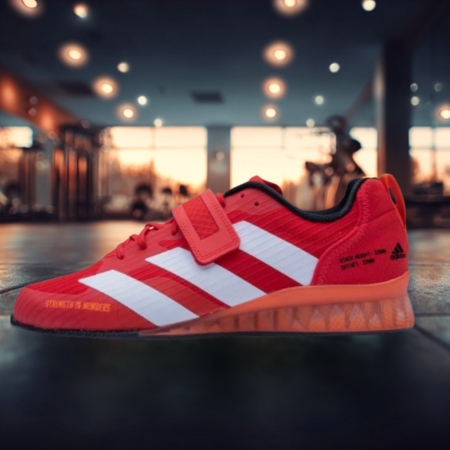
Supportive, well-structured design makes this an excellent pick for lifters who need stability under arches.
- Heel Height: 22 mm
- Sole Material: TPU with structured midfoot
- Lockdown System: Wide strap and laces
- Use Case: Squats, taller lifters, low arches
Adidas Adipower III balances heel lift with midfoot control to help lifters struggling with ankle or mobility limits.
9. Reebok Lifter PR 3 – Best Budget Hybrid Lifter
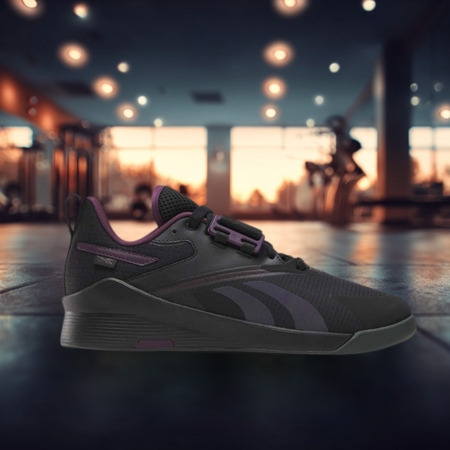
Built for versatility, Reebok Lifter PR 3 supports lifting and light conditioning work.
- Heel Height: 15 mm
- Sole Material: EVA foam with rigidity
- Lockdown System: Strap and lace design
- Use Case: Cross-training, beginner programs, hybrid lifters
Affordable price with a surprisingly capable performance profile for those still finding their focus.
10. kcross Weightlifting Shoes – Best Value for Squat-Focused Lifters

kcross Weightlifting Shoes is an under-the-radar performer that brings features often seen in premium powerlifting shoes at a fraction of the cost.
- Heel Height: 20 mm
- Sole Material: TPU
- Lockdown System: Dual straps with reinforced lacing
- Use Case: Squats, general powerlifting programs
Stiff platform, secure lockdown, and great value make this a serious contender for anyone focused on squatting.
What to Look For in Powerlifting Shoes
Not all powerlifting shoes are created equal. Foot structure, preferred lifts, and experience level influence what kind of shoe works best.
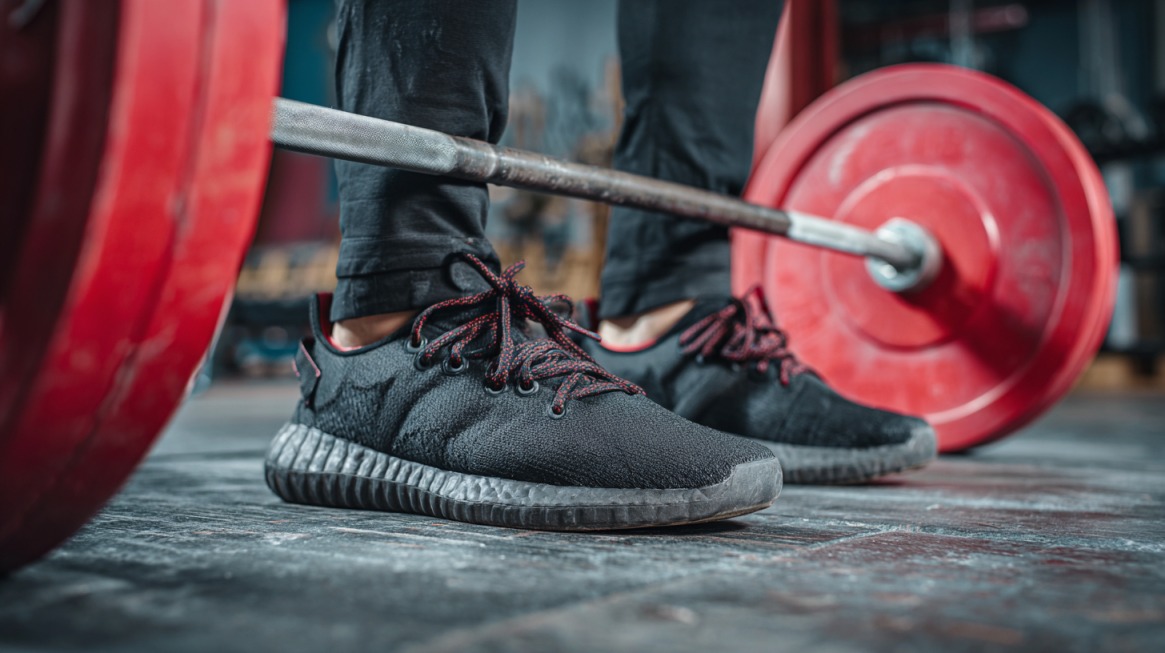
Heel Height & Drop
Heel elevation plays a major role in how your body positions itself during squats and deadlifts.
- Achieve deeper squat depth
- Maintain an upright torso
- Compensate for limited ankle mobility
- Improve quad activation and knee tracking
For deadlifts, a flat or near-zero drop (0–4 mm) offers:
- Improved leverage off the floor
- Reduced range of motion
- Better balance and posterior chain engagement
Heel height influences how force is applied through the body. Going too high or too flat, depending on the lift, can reduce efficiency or cause instability.
Sole Stiffness
The base of the shoe is what connects lifters to the platform. Any compression here robs force and compromises balance.
- TPU (thermoplastic polyurethane): Rigid and durable
- Stacked leather: Traditional but firm under pressure
Benefits of a stiff sole:
- Maximum force transfer
- Consistent bar path
- Stable positioning throughout the lift
Squishy or foam-based soles are best left to runners and casual gym-goers—not lifters handling serious weight.
Fit & Lockdown
A secure fit eliminates slippage, maintains posture, and ensures safety under load.
- Dual straps: Anchor the midfoot
- BOA dials: Provide micro-adjustable tension
- Traditional lacing systems: Allow flexible fit tuning
Why it matters:
- Prevents foot movement inside the shoe
- Enhances overall control and confidence
- Reduces the risk of ankle rolling or foot collapse
Good lockdown allows the lifter to stay focused on form—not on whether their foot might shift under 400 pounds.
Purpose-Specific Features
Not all lifting shoes are designed to serve every purpose. A shoe perfect for squatting might perform poorly during deadlifts or hybrid workouts.
- Elevated heel
- Reinforced heel cup
- Dense outsole with lateral stability
Deadlift shoes:
- Flat, minimal sole
- Low-to-ground profile
- Wide toe box for stability
Hybrid shoes:
- Moderate heel drop
- Flexibility in the forefoot
- Solid heel support with versatility across lifts
Identifying your primary lift will help narrow down your choices and ensure better long-term satisfaction.
Durability & Comfort
Lifting shoes must withstand the demands of high-pressure movements while keeping your feet supported and cool.
- Reinforced stitching
- Dense rubber outsoles
- Abrasion-resistant uppers
Comfort-enhancing materials:
- Mesh panels or perforated uppers for breathability
- Cushioned collars and heel padding for extended wear
- Moisture-wicking liners to reduce sweat buildup
Training frequency should also guide durability expectations. Daily lifters need a shoe built like armor, while occasional lifters may prioritize lightweight comfort.
Selecting the right shoe means balancing all of these elements to match lifting goals and physical mechanics.
How Different Shoes Affect the Big Three Lifts
Proper footwear has a direct influence on form, force transfer, and injury prevention. Small adjustments in heel height or sole rigidity can radically change lifting mechanics.
Finding the right shoe for each of the big three lifts helps lifters train smarter, not just harder.
Squat
Elevated heels promote a more upright torso position, especially useful for high-bar or Olympic-style squats.
Lifters with limited ankle mobility benefit most, as a heel lift allows deeper squats without compromising balance or form.
- Improved Depth: Easier to hit parallel or below
- Knee Tracking: Enhanced alignment over toes
- Torso Angle: Upright posture reduces forward lean
Top Picks:
- Nike Romaleos 4
- Reebok Legacy Lifter III
- Adidas Adipower III
Shoes with 20–22 mm heels provide ideal leverage and reduce compensations caused by mobility restrictions.
Bench Press
Leg drive plays a huge role in pressing strength. A stable shoe anchors the feet, reducing energy leaks during the press.
A slightly elevated heel may aid lifters with tight hips or limited arch control, while others may prefer flat powerlifting shoes for more grounded contact.
- Stability: Prevents foot shift during arch setup
- Leg Drive: Transfers lower body force to upper body
- Postural Support: Aids in locking hips and glutes in place
Top Picks:
- Adidas Powerlift 5
- TYR L-1 Lifters
- Nike Romaleos 4
No compression and a solid outsole help maintain full-body tension through each rep.
Deadlift
Flat shoes or barefoot setups shorten the distance between the hips and the floor, reducing range of motion.
A thin, hard sole gives better force transmission while maintaining full foot contact. Raised heels can tip lifters forward, especially during sumo pulls.
- Leverage: Closer center of gravity
- Range of Motion: Reduced lift distance improves efficiency
- Foot Positioning: Flat outsole improves balance and traction
Top Picks:
- Adidas The Total
- Converse Chuck Taylor All-Stars
- Barefoot or deadlift slippers
No heel elevation and minimal sole stack provide the cleanest bar path for both sumo and conventional lifters.
Buyer’s Guide: How to Choose the Right Powerlifting Shoe
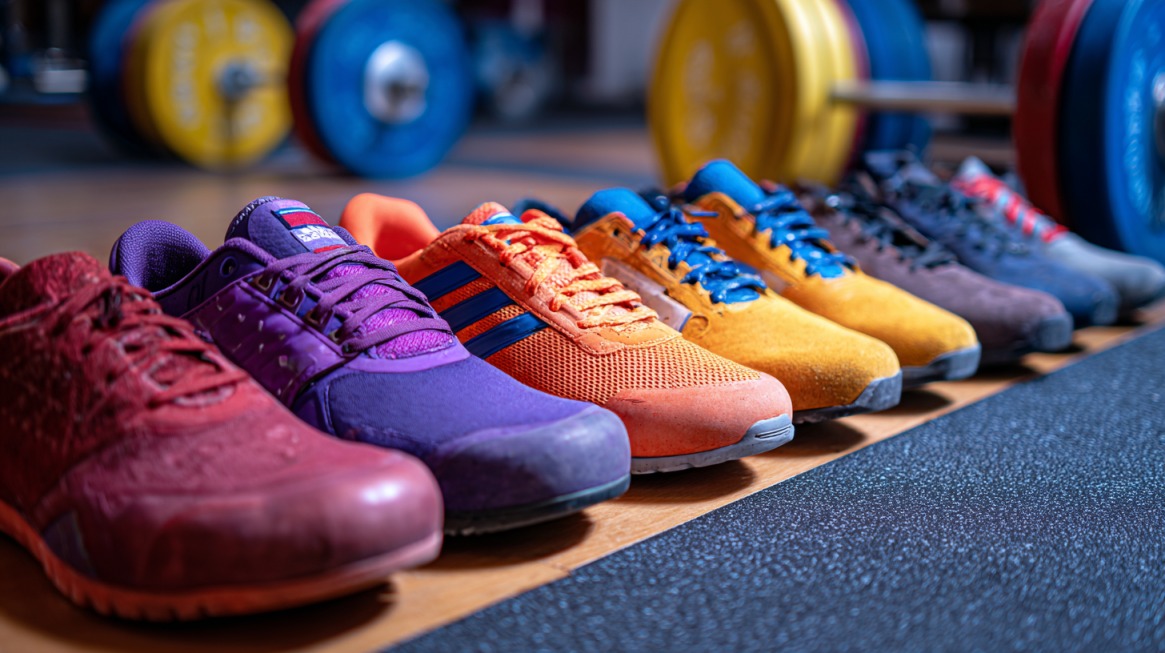
Picking the right lifting shoe is about matching gear to biomechanics, goals, and budget.
Lifters often overlook key factors that affect performance, until plateaus or pain force a rethink.
Know the Main Priority
Start with the lift that matters most. Squat-focused lifters benefit from elevated heels. Deadlift specialists get better results with flat soles.
General strength athletes or CrossFitters may need hybrid models that balance both.
- Squat Priority: Go for 15–22 mm heels with solid ankle support
- Deadlift Focus: Seek flat or near-zero-drop powerlifting shoes with hard soles
- Hybrid Use: Choose versatile options with moderate stability and flexible forefoot
Consider Anatomy and Mobility
Foot width, arch height, and ankle mobility all affect shoe compatibility. Flat-footed lifters often need better arch support. Those with wide feet should avoid narrow or overly structured designs. Struggling with ankle mobility? Raised heels help mitigate it.
- Flat Feet: Structured midfoot and heel cup for control
- Wide Feet: Roomy toe boxes and adjustable lockdown
- Tall Lifters: More heel elevation can improve squat posture
Don’t Ignore Heel Height
A few millimeters make a huge difference. Going too high may push lifters forward. Too low may restrict depth or force hip compensation. Heel height matters more than people realize—especially under load.
Budget vs. Long-Term Value
Cheap doesn’t always mean bad, but long-term lifting requires reliable gear. High-quality TPU heels and dual-strap lockdown systems often last for years. Frequent lifters get more value out of premium options.
- Budget Picks: Converse, Reebok Lifter PR 3
- Mid-Range Workhorses: Adidas Powerlift 5, Nike Metcon 9
- Elite Grade: Romaleos 4, Legacy Lifter III
When Plates or Wedges Might Suffice
Some lifters don’t need a shoe upgrade yet. Olympic plates under heels or squat wedges can simulate elevated heel effects. These options work temporarily but lack lockdown and foot stability.
Shoes should evolve as lifters progress. Gear that matches strength, anatomy, and intent will yield far better returns than any gimmick or brand name.
Final Verdict
Powerlifting shoes are essential tools. Small differences in heel height, sole material, and fit can create big improvements in performance, safety, and confidence under the bar.
One perfect shoe doesn’t exist. What works for a narrow-footed squat specialist may fail a wide-footed deadlift lifter.
Shoe choice should reflect training priorities, anatomy, and lifting goals. A well-matched pair offers better force transfer, fewer injuries, and cleaner technique.
Invest once in shoes designed for your needs, and they’ll repay you every session with more efficient movement and stronger lifts.
